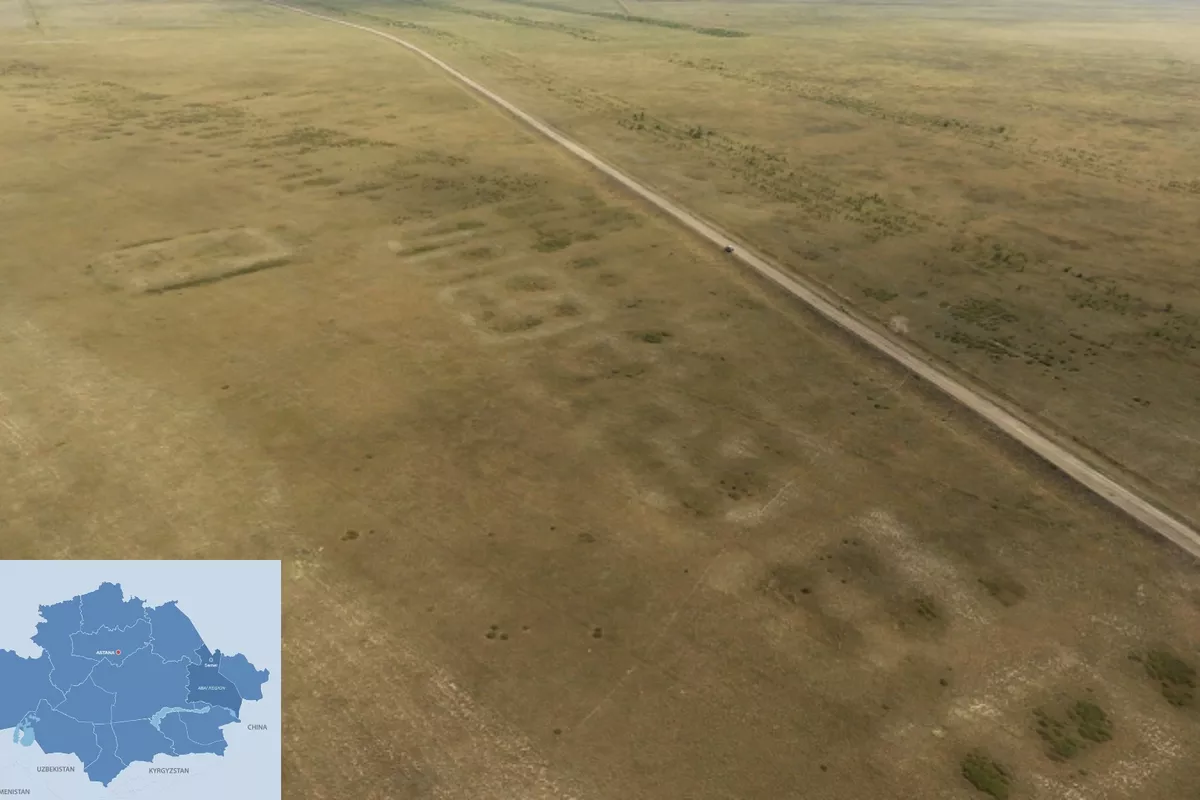
The map is designed by The Astana Times.
An international team of scientists from Kazakhstan and the United Kingdom has published new research on the Semiyarka monument, also known as the City of Seven Ravines, one of the largest known Bronze Age settlements in steppe Eurasia. The site sits on a cape above the Irtysh River in the Beskaragai district of the Abai Region, The Caspian Post informs via The Astana Times.
Their findings, released in the Antiquity journal and highlighted on Cambridge University’s website, show that Semiyarka was far more advanced than previously believed.
According to the study, the settlement, dated to around 1600 BC, functioned not only as an administrative hub but also as a major industrial center with large-scale metallurgical production. Researchers say the site was part of an extensive trade and technological network spanning from China to Europe.
“In 2018, a U.K.-Kazakh team initiated geophysical investigations at Semiyarka. Surface collection recovered abundant Late Bronze Age ceramics alongside metallurgical debris, including substantial evidence for tin-bronze production. These findings suggest Semiyarka was a highly organized metallurgical center capable of controlled production, challenging long-held assumptions about metalworking in semi-nomadic steppe societies. Geophysical surveys also revealed architectural traces and a planned settlement layout,” reads the report.
The team concluded that Semiyarka was a proto-urban center covering roughly 140 hectares. The settlement featured straight, evenly planned quarters likely built at the same time, indicating a unified construction plan. Archaeologists identified remnants of at least 20 household complexes, each possibly fortified and constructed from durable materials.
Researchers collected fragments from 114 ceramic vessels, 85% of which belonged to the Alekseevka-Sargary culture (1500-1100 BC). Smaller quantities of Andronoid pottery point to contact with groups from western Siberia, while the absence of Begazy-Dandybaev ceramics indicates the settlement predates that cultural tradition, likely originating in the 16th century BC.
One of the most important discoveries is a vast metallurgical zone. Archaeologists found numerous crucibles, slag and finished bronze items, indicating a full-scale industrial complex rather than a small workshop.
“It’s very exciting, because it’s such a rare find to have tin bronze production in this area,” said Miljana Radivojević, lead author and an associate professor in archaeological science at University College London, in an interview with CNN Science.
“We know we have hundreds of thousands of tin bronze artifacts from the Bronze Age in the Eurasian steppe and we have only one published site on tin bronze production. And this is the second one. Tin bronze allowed for sturdier tools and other materials to be made,” she said.
The survey also produced metallurgical samples including ores, crucibles, slags, production debris and finished artifacts, with 35 selected for laboratory analysis.
“We just don’t have anything like this at all. There are hardly any settlements of any kind recovered in the steppe. Across this landscape, we typically associate sites with mobile pastoral groups, and we think maybe they were in tents or yurts. What we have got here is something that’s very clearly quite different,” said Dan Lawrence, a co-author and a professor of archaeology at Durham University.
Fieldwork at Semiyarka is ongoing, and researchers expect additional discoveries. Based on current evidence, the ancient settlement could significantly reshape modern understanding of Bronze Age steppe societies and their role in Eurasian history.
Share on social media
